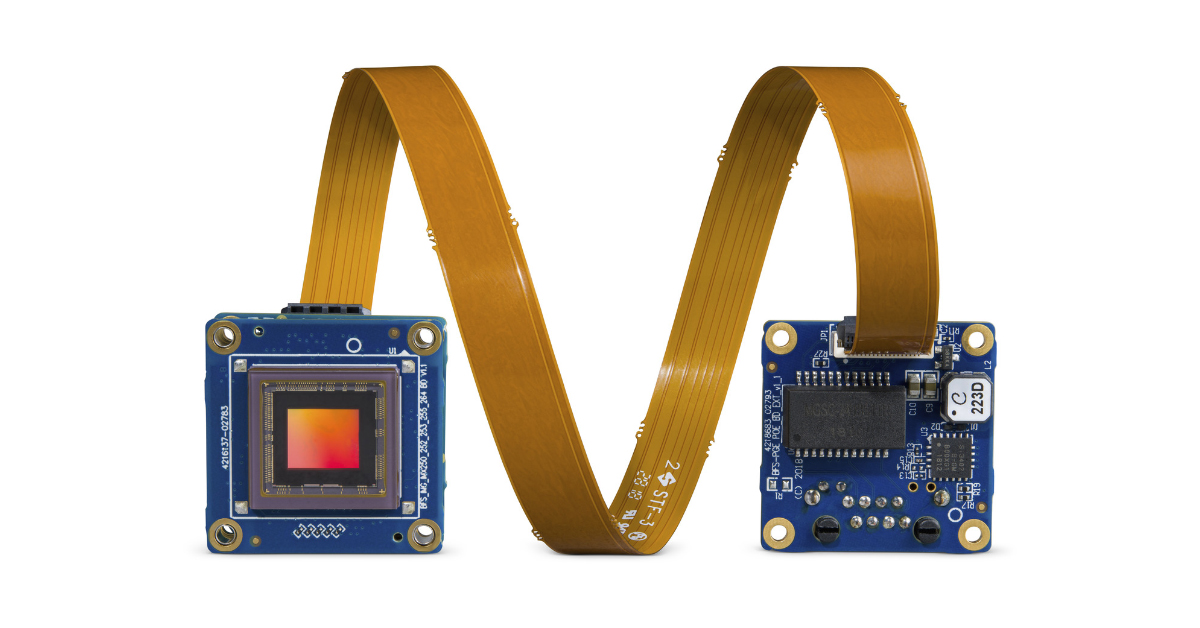Refining Eye-Tracking Performance with the Chameleon3 USB 3.1
Tracking eye movement has come a long way since educational psychologist Edmund Huey built a contact lens with holes for the pupils more than a century ago to determine how people read. Today, noninvasive eye trackers are used in a wide range of scenarios.
UX/UI professionals and academic researchers employ eye-tracking technology to perform behavioral data collection and analysis on images, videos and websites. Eye gaze allows people with disabilities to control a computer mouse or an on-screen keyboard. Developers, meanwhile, are using the technology to create new eye-tracking applications.
For the past three years, the GP3 eye tracker from Gazepoint has empowered unprecedented developments in these markets. Using a Firefly MV camera, GP3 was the first eye tracker to deliver high performance and reliability at an affordable price point. In summer 2016, Gazepoint will expand the device's capabilities with the launch of the GP3HD, which incorporates Chameleon3 USB3 Vision camera.
High Standards in Eye Tracking
The current version of GP3 desktop eye tracker is ideally placed below a display and at roughly one arm's length from the user. In order to compute the point of gaze, infrared (IR) lights illuminate the face and eyes which reduces sensitivity to ambient light. The system includes a board-level Firefly MV mono USB 2.0 camera to capture high quality images of the pupil and a reflection off the surface of the cornea, called a glint. The system features a microlens and IR pass filter, compact IR LED lights, and associated control and I/O electronics.
After FlyCapture SDK acquires the image, image-processing algorithms isolate the pupil and glints and convert these image features into the point of gaze estimates of where the user is looking on a computer monitor.
The GP3 system also provides an API that lets developers investigate innovative techniques for enhanced natural human-computer interactions.
"As the eyes provide a window into the user's thoughts, information gained through eye tracking is critical for a large number of applications ranging from usability testing to academic research in cognitive processes," said Dr. Craig Hennessey, Co-founder of Gazepoint.
![]()
Eye Tracking: The Next Generation
When Gazepoint started to develop the GP3, engineers considered a number of camera manufacturers from all over the world. "We chose FLIR for its affordable, high-quality machine vision products, its friendly customer service and full-featured SDK," Hennessey recalled.
It was only natural, then, that Gazepoint choose another product for its next-generation eye tracker, the GP3HD. Chameleon3 camera improves upon the original GP3 on a variety of important metrics. The increased resolution (1280x1024) featuring a ½" P1300 global shutter CMOS sensor from On Semi enables a larger camera field of view and therefore allowable range of head movements in front of the system. The frame rate also has increased from 60 Hz to 150 Hz, improving the GP3HD's temporal tracking ability and allowing a more stable gaze data signal. As with the Firefly MV in the GP3, GP3HD will use the Chameleon3 camera's image strobe to synchronize the IR LED illumination system.
Just as Gazepoint selected Firefly MV for its very common connectivity bus (USB2), the company did the same with the Chameleon3 and its USB3 bus. As Hennessey stated, "These are core requirements to an affordable, widely usable system." Additional advantages of both cameras include high-quality machine vision camera sensors, good IR sensitivity and electrical control of the IR illumination system.
Gazing into the Future
Thanks to the reliability of its manufacturing process and the high quality of components, the GP3 is increasingly being recognized as a high-performance and easy-to-use all-in-one eye-tracking solution. With the Chameleon3 camera behind it, Gazepoint expects the GP3HD to offer even greater benefits to the researchers and developers who use it when the product debuts in summer 2016.
![]()
About Gazepoint
The Gazepoint Team has over a decade of experience developing high performance gaze-tracking systems. Gazepoint's mission is to enable market researchers and neuro-marketers, UI/UX professionals and academic researchers to perform behavioral eye-tracking data collection and analysis over a wide range of media types. We achieve our goal by providing high-performance, affordably priced eye-trackers to clients in applications from academic research to video game design and more. We envision a world with eye trackers on every desk, phone, tablet, car and cockpit, helping users achieve optimal interaction in a natural environment.
www.gazept.com


